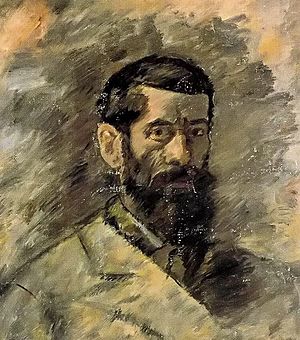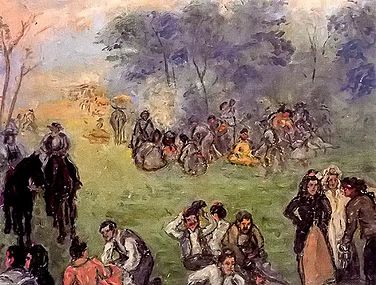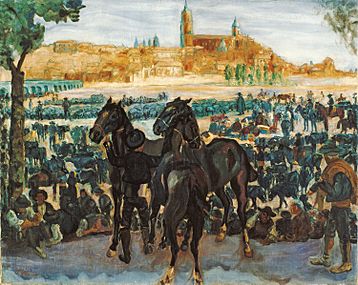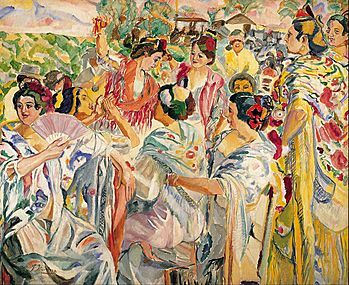Francisco Iturrino facts for kids
Quick facts for kids
Francisco Iturrino
|
|
|---|---|

Francisco Iturrino, Self-portrait, c.1910
|
|
| Born |
Francisco Nicolás Iturrino y González
9 September 1864 |
| Died | 20 June 1924 Cagnes-sur-Mer, France
|
| Nationality | Spanish |
| Education | Académie Royale des Beaux-Arts, Brussels |
| Known for | Painter |
| Movement | Orientalist; Fauvist; Post-impressionist |
Francisco Nicolás Iturrino González (born September 9, 1864 – died June 20, 1924) was a Spanish painter. He is known for his unique style, often called Post-impressionist. Some people also consider him a Fauvist artist. He had Basque family roots.
Contents
About Francisco Iturrino
Francisco Iturrino was born in Santander, Spain. In 1872, his family moved to Bilbao. When he was very young, his uncle, Elviro González, taught him how to draw. His uncle was a poet, painter, and musician.
After finishing school, Francisco went to Liège to study engineering. But he loved art so much that he secretly left his engineering classes. He moved to Brussels to study painting instead. He attended the Académie Royale des Beaux-Arts.
His Art Journey
To become a painter, Francisco moved to Paris. There, he worked with Henri Evenepoel, a friend from Brussels. By 1901, his art was good enough to be shown at the famous Vollard Gallery. His work was displayed next to paintings by a young artist named Pablo Picasso. Later, he also showed his art at the Salon d'Automne.
Soon after, Francisco returned to Spain. He traveled across the country and lived in Salamanca for a while. Then, he set up his art studio in Seville. In 1906, he married Marie Joséphine Delwit Schwartz, whom he had met in Belgium.
Travels and Style
Francisco kept traveling around the Basque Country, France, and Andalusia. Andalusia was his favorite place because of its beautiful landscapes. He also painted exciting bullfights, lively festivals, and portraits of women. During this time, his paintings became brighter. He started using more strong, contrasting colors.
From 1911 to 1912, he visited Morocco with Henri Matisse. Matisse was a close friend he had met in art workshops. Francisco often stayed with Matisse when he visited Paris. In 1919, he had a big art show hosted by the Círculo de Bellas Artes.
Later Life and Legacy
In 1920, Francisco became very ill with a problem in his leg. He needed an operation. Sadly, his leg had to be removed the next year. After that, he mostly focused on making etchings (a type of printmaking). He needed more surgery and soon faced money problems.
An art expert named Élie Faure helped him. He organized an art show at the Galerie Rosenberg. Famous artists like Matisse and Picasso, along with other friends of Francisco, donated their paintings for the show. The money raised helped Francisco retire to Cagnes-sur-Mer in 1922. He passed away there two years later, at the age of 59.
Selected paintings
Images for kids
-
A Spaniard in Paris, (Portrait of the Painter Francisco Iturrino) by Henri Evenepoel
See also
 In Spanish: Francisco Iturrino para niños
In Spanish: Francisco Iturrino para niños





